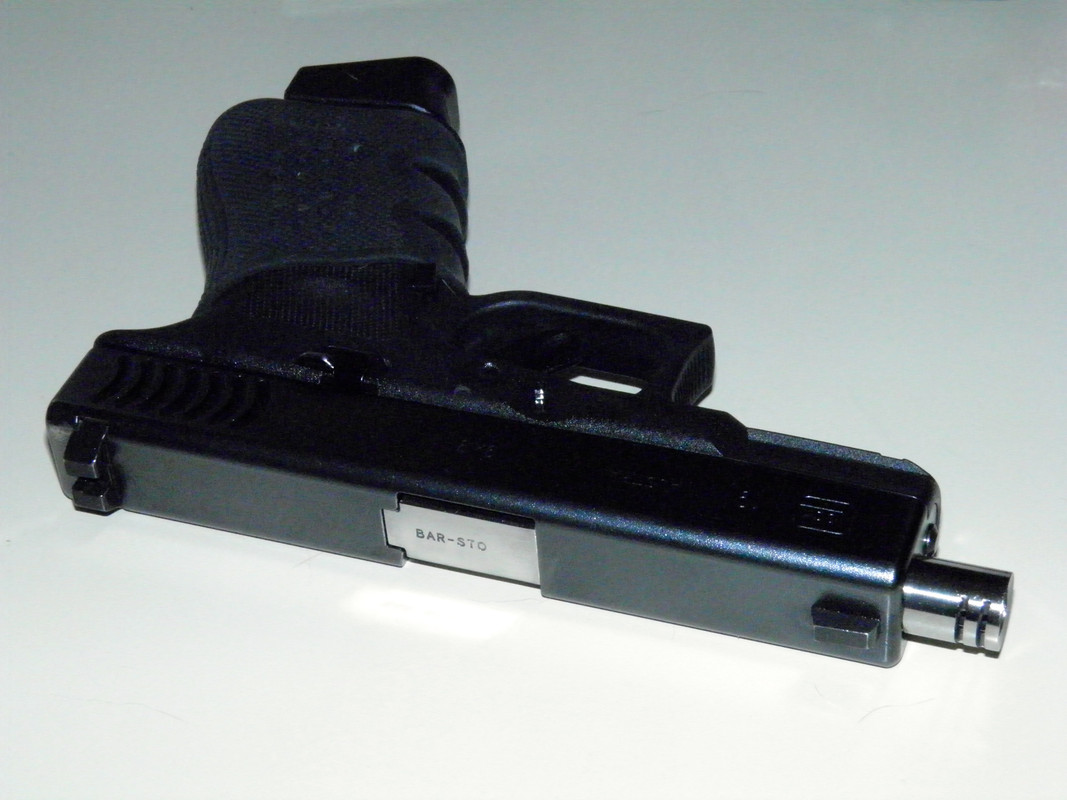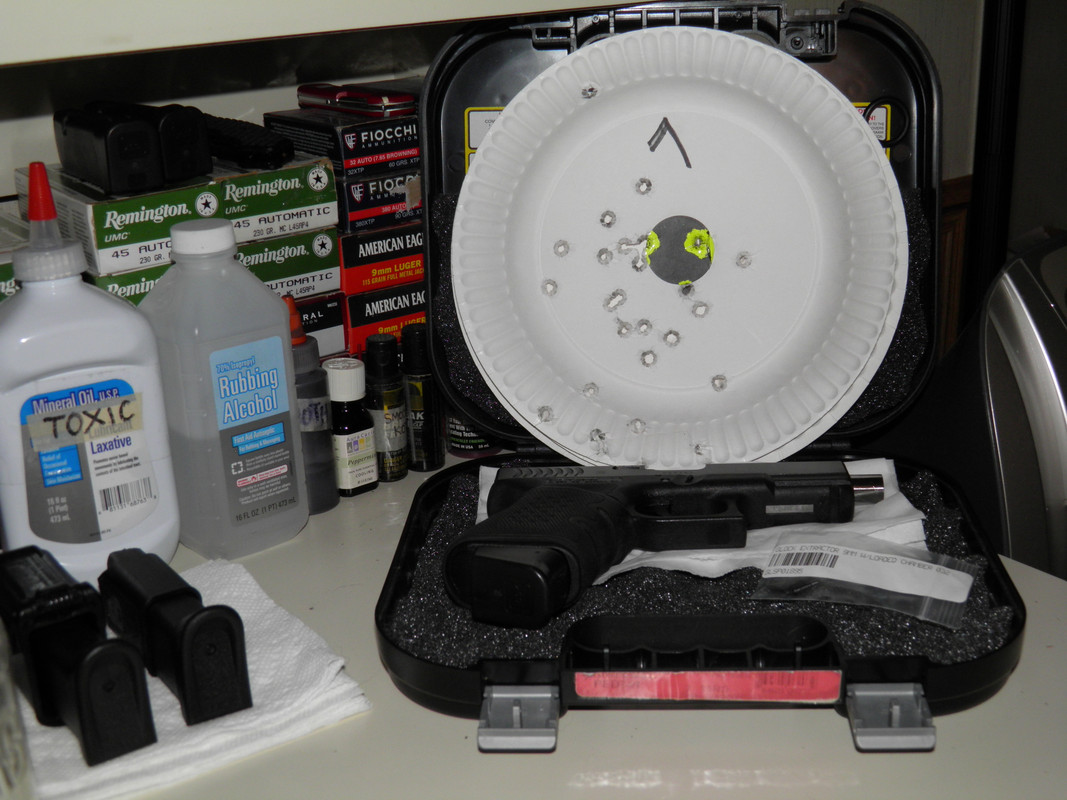Let me see if I can get this out correctly. Let's assume that all remains the same (identical ammo, conditions, grip/size/weight etc.). My questions pertain to muzzle rise reduction and not necessarily felt recoil impulse. I'm not concerned with loss of terminal velocity or power factor or anything like that, this is strictly for punching holes in paper. I'm also aware that reduced power recoil springs may be required for full functionality, but let's assume that the proper springs are being used to allow for fully reliable functionality.
For a single port compensator, how will the barrel length affect the effectiveness of muzzle rise reduction? I'm thinking that the longer barrel of a G17 may benefit more due to higher pressure at the muzzle compared to a G45, but I could be wrong with that assumption. Which of those two candidates would be the better host for a compensator?
How do ported barrels compare to compensators in preventing muzzle rise? Let's say you compare a ported G17 to a compensated G17 (all else being equal), which would be most effective?
For a single port compensator, how will the barrel length affect the effectiveness of muzzle rise reduction? I'm thinking that the longer barrel of a G17 may benefit more due to higher pressure at the muzzle compared to a G45, but I could be wrong with that assumption. Which of those two candidates would be the better host for a compensator?
How do ported barrels compare to compensators in preventing muzzle rise? Let's say you compare a ported G17 to a compensated G17 (all else being equal), which would be most effective?







